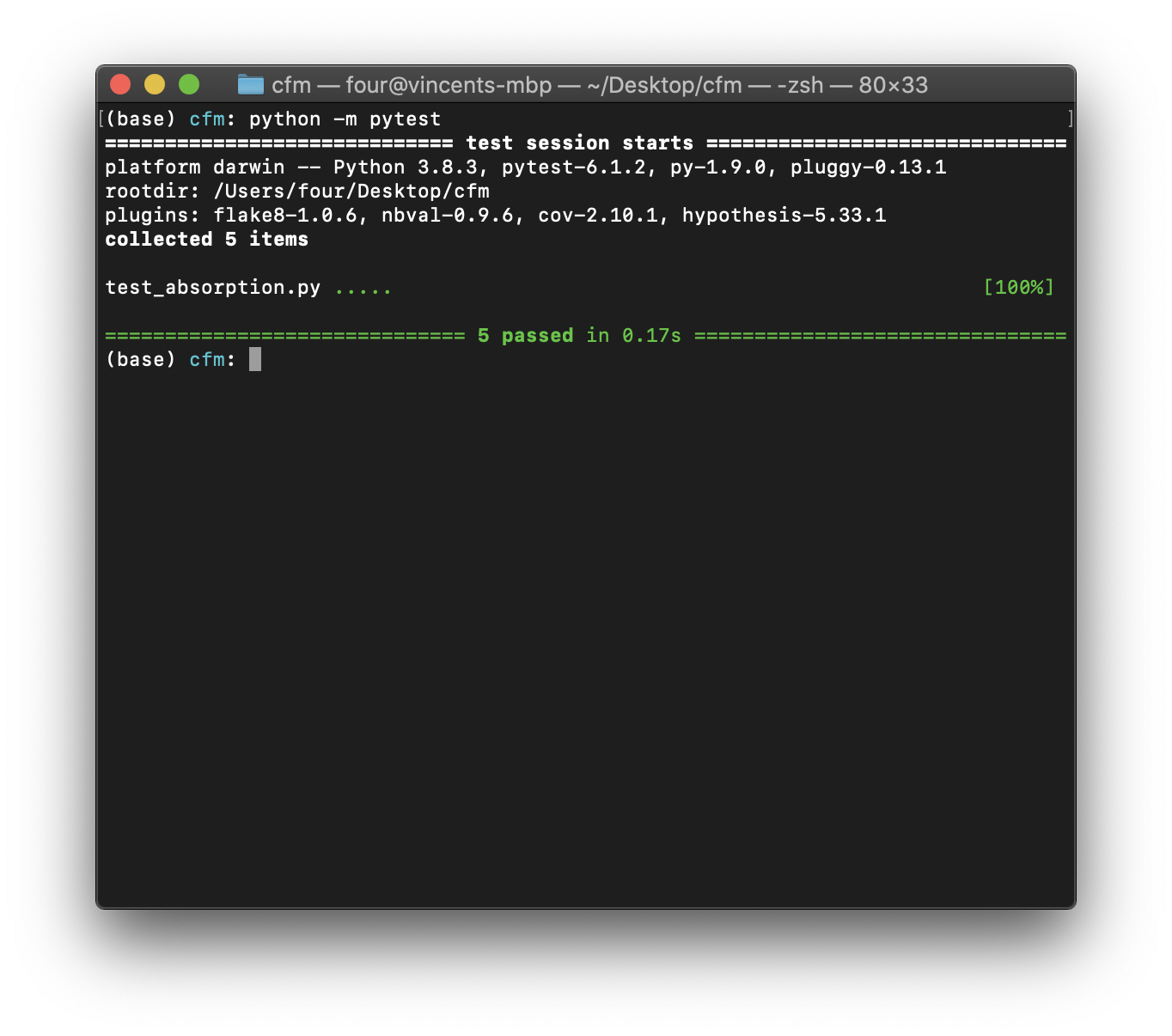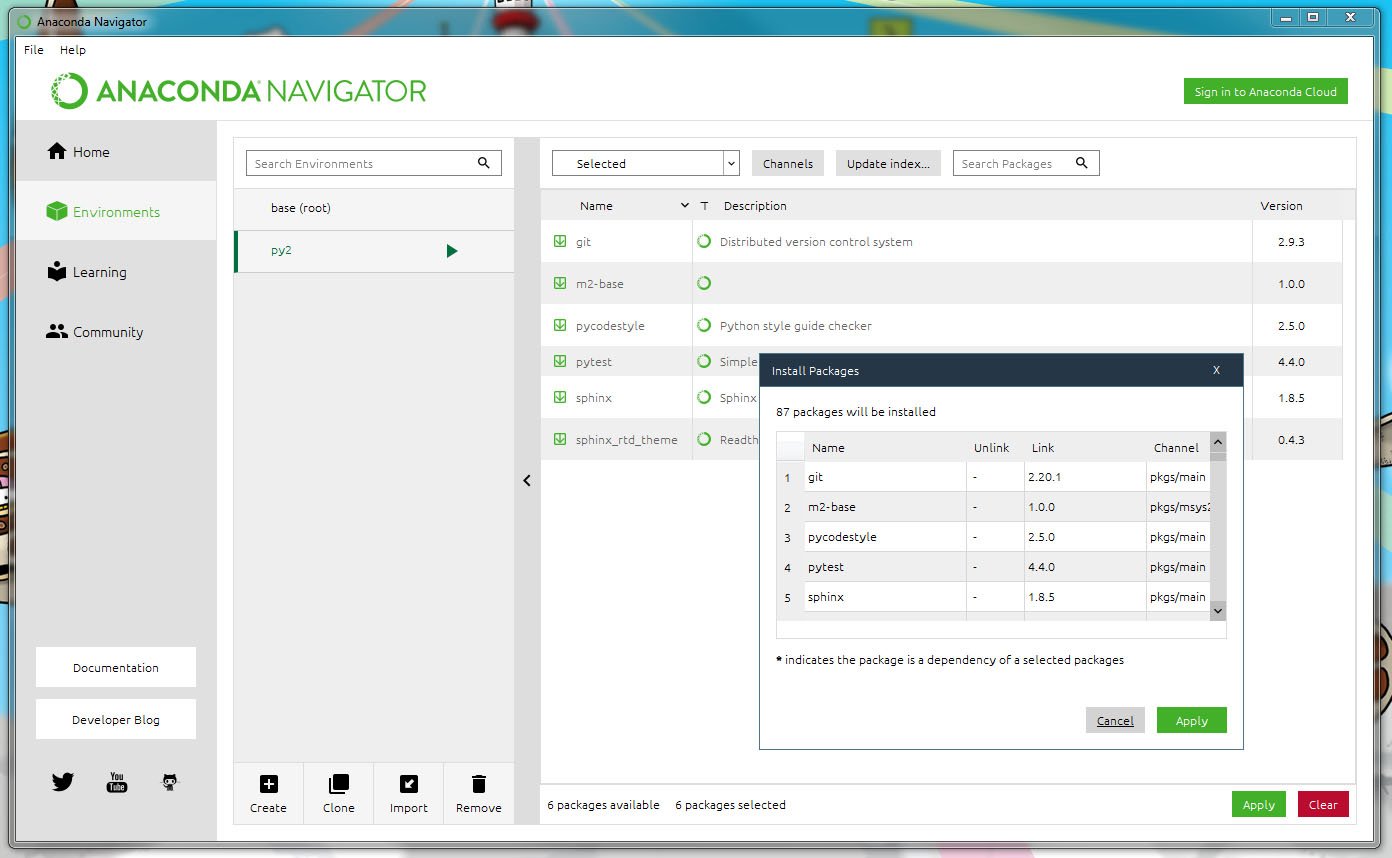

- #ANACONDA PROMPT INSTALL PYTEST HOW TO#
- #ANACONDA PROMPT INSTALL PYTEST UPDATE#
- #ANACONDA PROMPT INSTALL PYTEST FULL#
- #ANACONDA PROMPT INSTALL PYTEST WINDOWS#
If this were a normal machine you’d be able to call flake8 here without specifying a path.īecause Github Actions runners ignore shell profiles, you have to specify the path from the Conda directory instead.Īlternatively you can use shell: bash -l for the step which should make the path
#ANACONDA PROMPT INSTALL PYTEST FULL#
The next line throws errors for specific code issues, then the following line runs the full linter to print any style issues.

The first line installs flake8 into the base environment. This step runs the flake8 linter to check the python code in the directory. count -exit-zero -max-complexity=10 -max-line-length=127 -statistics # exit-zero treats all errors as warnings. count -select=E9,F63,F7,F82 -show-source -statistics

# stop the build if there are Python syntax errors or undefined names Installing the environment’s packages into the base environment avoids this issue because it makes the packages available by default. Unfortunately, environment variables don’t persist between steps in a workflow, which breaks some things in Conda. Normally we’d use something like conda env create -f environment.yml to install an environment from a file. The CONDA environment variable is present in all environments to point to the Miniconda root directory for the virtual machine. This is also the first Conda specific step. Which shell is being run depends on the operating system for the job, though it can be specified manually with the shell keyword.īecause this action uses Ubuntu, the shell defaults to bash. The first thing to notice is the run keyword, which executes commands in a shell.
#ANACONDA PROMPT INSTALL PYTEST UPDATE#
$CONDA/bin/conda env update -file environment.yml -name base # $CONDA is an environment variable pointing to the root of the miniconda directory This section lists explains the basic syntax of an action line by line. The only issue is that they don’t currently explain much of the syntax, they just refer you to templates or the full reference document. The tl dr of it is that you add the file /.github/workflows/.yml to your repository.
#ANACONDA PROMPT INSTALL PYTEST HOW TO#
If you’re unfamiliar with how to set up an action, start there. Github does a great job of explaining how to set up a starter workflow. If you are unfamiliar with continuous integration, or want a refresher, you may want to start here.
#ANACONDA PROMPT INSTALL PYTEST WINDOWS#
Then it gives examples of how to use Github Actions to run tests on both Windows and Ubuntu virtual machines.įinally it discusses when and how to use actions from the marketplace instead of writing all of the logic yourself. There are several actions in the Marketplace that are designed to perform various tasks with Conda,īut Miniconda is already installed on Github Actions runners so they aren’t strictly necessary.įirst it explains the different parts of a Github Action and what they do. In particular, there are no tutorials of how to use Github Actions in repos that manager their dependencies with Conda environments. While it is nice to have a CI service in the same place as your code, there are fewer guides about how to use it than there are for more established services like The dask module is used to speed up certain functions.Around a year ago Github released a continuous integration (CI) service called Github Actions. The pyamg module is used for the fast cg_mg mode of random Including specialized formats using in medical imaging.Ī Qt plugin will provide imshow(x, fancy=True) and skivi.

Optional I/O plugin providing a wide variety of formats. You can use scikit-image with the basic requirements listed above, but someįunctionality is only available with the following installed: sphinx - gallery >= 0.10.1 numpydoc >= 1.0 sphinx - copybutton pytest - runner scikit - learn matplotlib >= 3.3 dask >= 0.15.0, != 2.17.0 # cloudpickle is necessary to provide the 'processes' scheduler for dask cloudpickle >= 0.2.1 pandas >= 0.23.0 seaborn >= 0.7.1 pooch >= 1.3.0 tifffile >= 2020.5.30 myst - parser ipywidgets plotly >= 4.14.0 kaleido Sphinx >= 1.8 # sphinx 4.3.0 broke support for sphinx-gallery 0.10.0 and below.


 0 kommentar(er)
0 kommentar(er)
